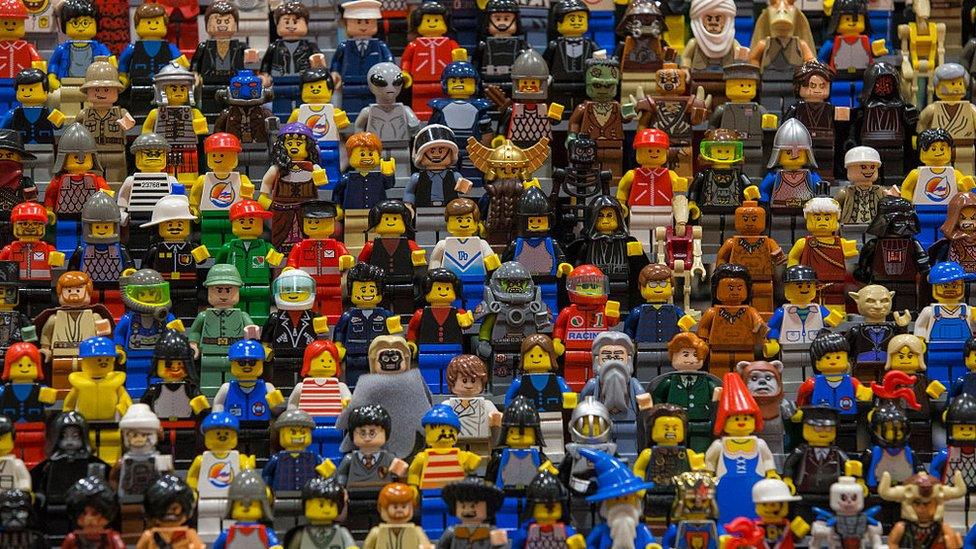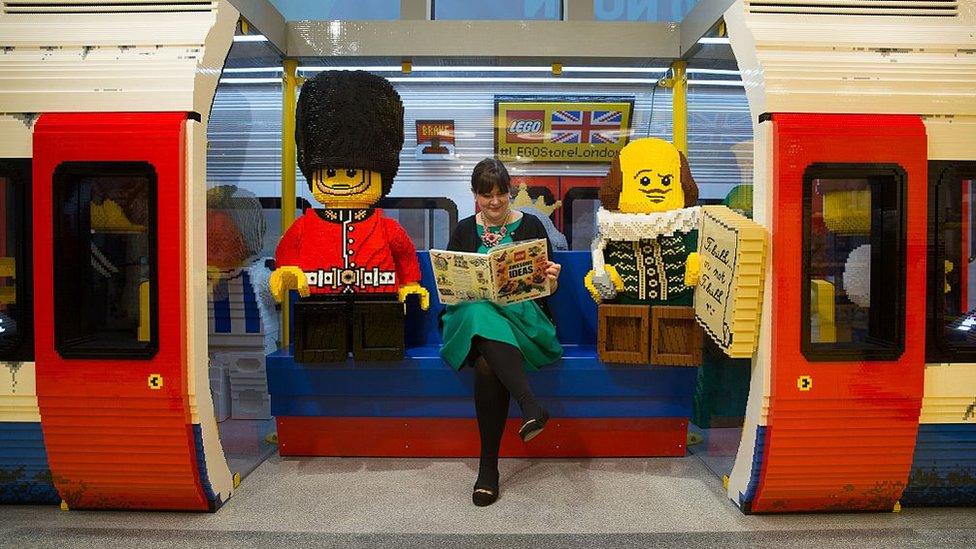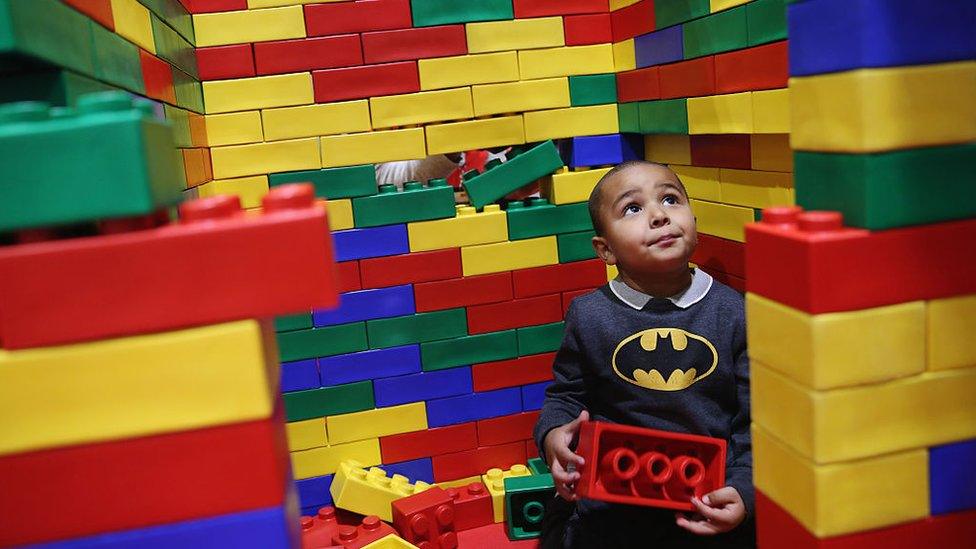Why is Lego not clicking with customers?
- Published

Lego's latest set of annual numbers showed its first drop-off in profits and revenues for 13 years this week.
After the Danish toy-maker turned itself around more than a decade ago, last year it failed to click with customers.
It said it had produced too many bricks, and had to sell off excess stock at a discount.
How can Lego have too many bricks? Isn't it just that it didn't manage to sell the sets it had produced?
In a way, yes. Every year it forecasts how much Lego it thinks it will need to manage its production, and last year its forecast wasn't on the money.
Though to be fair, for the previous 13 years it has consistently underestimated how much it would need to produce, and hasn't made enough stock, says Frederique Tutt, global toy industry analyst at the NPD Group.
Euromonitor toy analyst Matthew Hudak says "a big issue is that Lego has now is that it's grown so quickly with only one product that it inevitably had slow down and hit a wall."
Lego says its consumer sales in 2017 were flat, but it "started 2017 with a higher than optimal levels of inventories".
"The amount of Lego parents bought in 2017 was consistent with the prior year. However, because we sold fewer sets to retailers as we cleaned up inventories, revenues declined," it says.

Has Lego lost its imagination? Are the pieces getting too specific?
It's a bit harsh to say Lego has lost its imagination, says Ms Tutt. The toy industry like every other is cyclical, and after 13 years it's "fair enough to say it can have a rest", she says.
As for the pieces being too specific, she says today's children "like to be taken by the hand" rather than being given a set of generic blocks, and that themed sets have been "a driver of success" for Lego.
However, in 2017 there "was a bit too much of Star Wars, not just in Lego, but everywhere", she says. After three years of successive marketing the market was slightly saturated, she says.
In addition, there's "not a lot of evidence that a toy company can lean too much on licensing as licensed toys are growing quite a bit globally," says Mr Hudak.
"The high proliferation of smartphones allows children to watch their favourite shows all the time, which is growing demand for more licensed products," he says.
Lego says it hasn't run out of imagination. "Only one out of five top selling themes in 2017 was licenced. That was Star Wars. The other themes were those created by our own talented designers."

Is Lego too expensive?
Lego is more expensive than its direct competitors, but Ms Tutt says its quality is higher. It doesn't tend to use promotions that much because it doesn't have to, she says.
As for permanently reducing price to stimulate sales - "I don't think Lego wants to go that way", she says.
Lego pays licensing for sets that are linked to blockbuster brands such as Star Wars. That cost is directly passed on to consumers, making those sets more expensive.
Lego says: "We believe Lego products are unique and deliver great value for money. In addition, our products meet the highest safety and quality standards and last for generations."
Has Lego failed to keep up with 2017 trends?
"Households can have too many Lego products and not want more each year, and equally important is that children have fickle tastes, and simply lose interest in Lego," says Mr Hudak.
One of the big trends in 2017 in toys was "collectibles" - that is, toys that can be built up into a set.
Whereas the year before Lego was more fashionable, in 2017 the focus was on toys such as Lol Surprise! Dolls, says Ms Tutt.
However, in terms of what it does, Lego remains the market leader, with about two thirds of the global market in "construction toys", says Euromonitor.
There was also a general slowdown in the toy market in the UK as people's disposable income was squeezed by higher inflation and low wage growth, Ms Tutt adds.
Lego says: "We launched some great products in 2017. In addition to our top-selling themes such as Lego City, Lego Friends and Lego Duplo, we introduced new play experiences inspired by the latest digital trends."

Who are Lego's main customers?
Boys aged between 5 and 9. The company has been diversifying towards trying to attract more girls, but boys (or more specifically, their parents, relations, and people with disposable income buying for them) remain the core customers, Ms Tutt says.
There are Lego sets aimed at adult collectors, such as a Beatles Yellow Submarine, but these are more niche, says Ms Tutt.
Lego's largest markets are the US, Western Europe - specifically UK, Germany, and France - and China, says Mr Hudak.
Could Lego start using reclaimed plastic to help recycling efforts?
In a word, no, at least not soon. The type of plastic Lego uses is acrylonitrile butadiene styrene (ABS) which is tough to recycle. Reclaimed plastic would not be of a high enough quality.
Lego is trying to move towards using more sustainable materials - it recently announced that it is moving towards using "plant-based polyethylene" from sugar cane. This is still a hard-wearing plastic.
As children become more environmentally aware, Lego is likely to continue to get greener, says Ms Tutt.
Lego says: "We have set ourselves an ambitious target to make our bricks from sustainable sources by 2030... We are also working on developing new materials. Use of recycled materials presents many challenges, and to ensure that the product safety and quality is not compromised we are currently working on finding the right solution for using recycled materials in our products."
- Published6 March 2018

- Published2 March 2018
